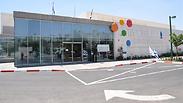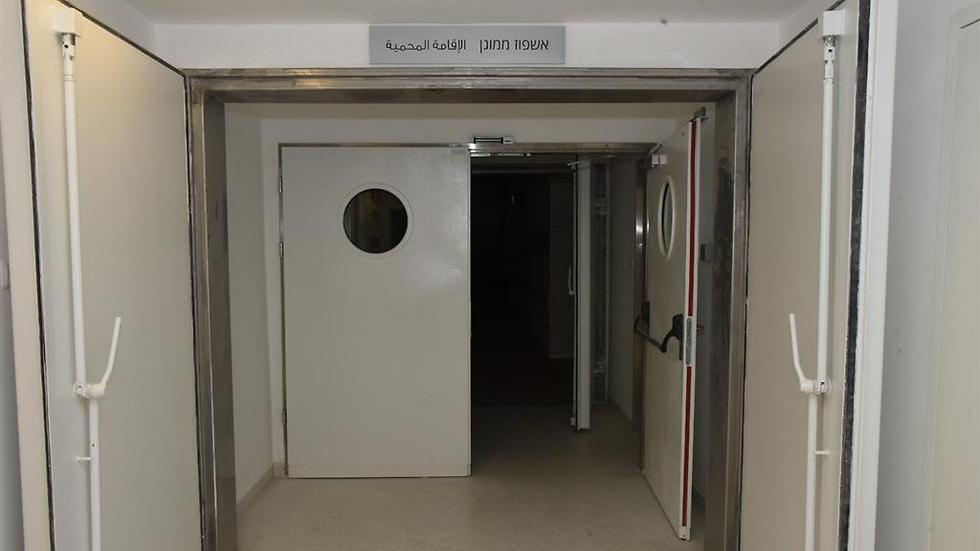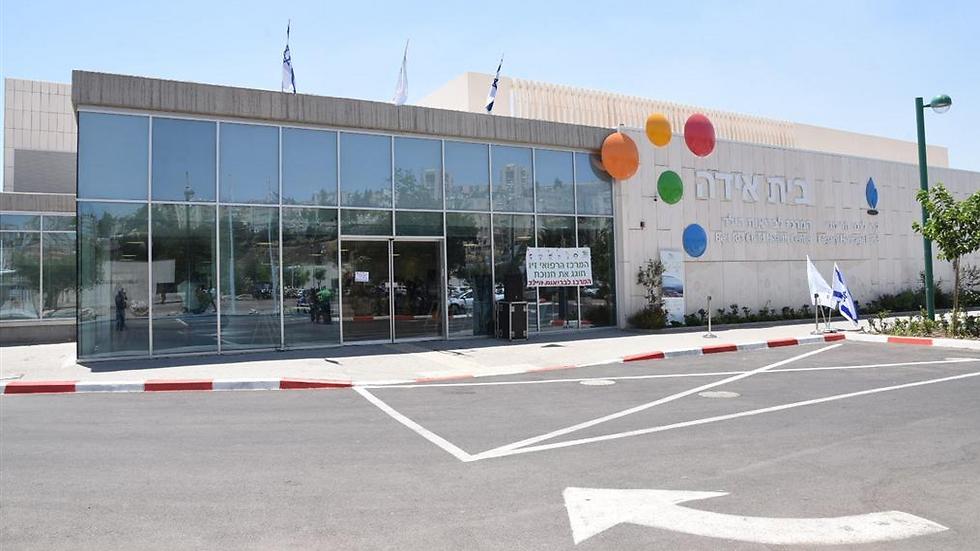
Beit Ida Child Health Center
צילום: צילום: אביהו שפירא
Decade after Second Lebanon War, a reinforced children's hospital in the north
Safed's Ziv Medical Center has a new, completely armored children's hospital with sophisticated equipment, various wards, and 60 cm thick walls facing Lebanon.
A decade after the Second Lebanon War, a fully reinforced children's hospital was opened at Safed's Ziv Medical Center last Tuesday, called the Beit Ida Child Health Center. The hospital includes an emergency room, an intensive care unit, outpatient and inpatient wards, and departments with various specializations, such as diabetes.
The Ida Center was built on an area of 6,000 square meters. Its construction lasted five months and cost some 100 million shekels. Approximately two thirds of the amount was provided by the state, and the remainder was obtained by donations. A large donation was received from the Legacy Heritage Foundation in the name of Ida Kavkof, a native of Columbus, Ohio, who contracted an incurable childhood illness that she nevertheless managed to overcome.
Ziv Medical Center's director, Dr. Salman Zarka, said at the opening ceremony that, because most donations go to hospitals in the center of the country, it's extremely important that the state continues its contributions to the north.
Zarka also said during the ceremony, "This is a large step for the citizens of the north, for the state's citizens who are vacationing in the north, for the soldiers, and even for the Syrian soldiers. The next stage is in line for cancer patients: inaugurating radiotherapy devices and a PET-CT. We are working with the assistance of MK Dr. (Yifat) Shasha Biton on reinforcing additional wards, including delivery rooms and the NICU."
The walls of the reinforced children's hospital were constructed in accordance with the requirements of the Home Front Command: The reinforced concrete is 30 cm thick, and the northern wall (facing Lebanon) is twice that. Also, the building is equipped with shock doors and windows made of iron and an NBC (nuclear, biological, chemical) filter that can be activated in case of emergency and will completely seal the building and supply filtered air.
During a war or other emergency, children's clinics and wards will be moved to the building's second floor, which is a fully reinforced floor. It will be transformed to an emergency hospitalization floor. In additional, the technical floor that contains all the building's infrastructure will also be completely armored, along with the emergency wards and children's ICU.
The ground floor (that is the building's fourth, due to its subterranean levels) is the top floor of the structure, and it contains the children's emergency ward, the pediatric unit, pediatric intensive care, children's classrooms, and doctors' offices.
The new pediatric intensive care unit has four hospitalization beds (twice what it had previously). The unit is equipped with innovated respiration and anesthetizing equipment, a modern monitoring system, sophisticated ultrasound and dialysis equipment, advanced beds and more. The children's emergency room treats some 14,000 patients per year. As such, seven treatment stands (two more than previously) have been installed in the inpatient ward that provides 10,000 days of hospitalization a year with 16 rooms and 31 beds.
The building's third floor contains all the various children's clinics, currently treating some 24,000 children per annum, an auditorium for conferences and lectures that extends to the second floor, offices, and a wing intended for emergency hospitalization.
The second floor has joint functions: normally, it contains the bottom section of the auditorium, but in an emergency, it can become a 100-bed hospitalization ward. The bottom floor concentrates all the electrical and climate-control systems, along with the rest of the technical services in the building.
Minister of Health Rabbi Yakov Litzman spoke at the inauguration on the lnog lines for tests in his ministry, "I don't understand why one needs to order an MRI. It's simpler that one who wants to have an MRI should have one, have a CT; why do we need all this regulation? I'm trying to change it, but the Ministry of Finance is insisting on it."












